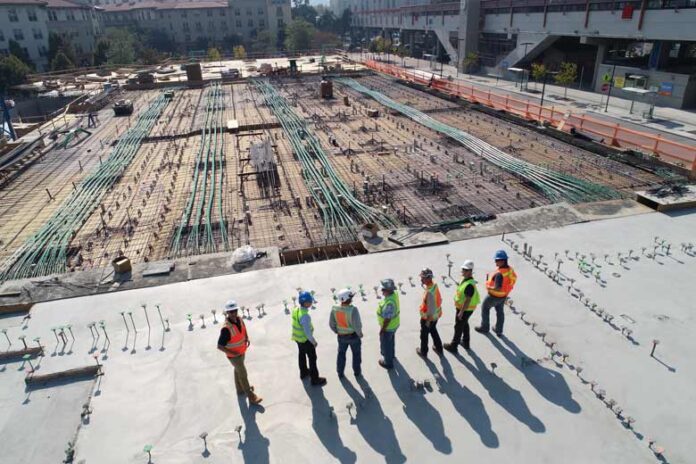Jessica Pierce, Digital Relations Consultant
Over the last decade, so much emphasis has been placed on reducing the carbon footprint of construction projects to mitigate the harmful effects the industry can have on the environment. With a growing climate awareness, carbon impact reduction is becoming more critical to organisations, and their projects follow suit.
Energy managers assess and supervise energy usage in facilities or organisations and implement more sustainable solutions. To make buildings more energy-efficient, they work hand-in-hand with engineers and other relevant consultants to oversee carbon management. They must also maintain compliance with the current energy legislation.
Understanding the impact
In order to reduce a project’s carbon footprint, it is important to understand its environmental implications. There are dedicated tools available for measuring footprints, but complex projects might need an environmental expert to examine the greenhouse effect. For instance, in the construction of a building, the energy manager should establish the carbon that could be produced by cement in use.
The assessment should encompass both direct and indirect emissions throughout the project life cycle. After all, the environmental impact is in the entire supply chain, starting from procuring raw materials, transportation, storage, processing raw to finished products, and waste disposal. This is where a sustainability consultant comes in to give a breakdown of the total carbon footprint. The report helps the energy manager determine the most viable solution to minimise high carbon intensity.
Set a carbon price for sources of high-carbon energy
Adding a proxy price to carbon is an excellent way to make the carbon supply chain more transparent and traceable. The UK has passed laws to end its global warming contribution, becoming the first major economy in the world to do so, although several countries have set net zero targets. By 2050, all greenhouse gas emissions must be zero in the UK, as opposed to the earlier target of 80% of 1990 levels. To meet the target, the country set a carbon proxy price to mitigate emissions and encourage the use of carbon offsetting technologies.
Through this approach, energy managers will demonstrate their commitment to reducing carbon emissions. That way, they can exclude suppliers that do not provide good environmental management plans. Associating carbon exposure with an economical cost ensures that the supply chain is adequately monitored and quantified. Making carbon a proxy for cost also allows the energy managers to deploy energy-efficient amenities and work with the right tech partners.
Reducing the impact
There are many different ways energy managers can reduce the impact a project has on the environment. For instance, it may involve cutting travel miles over the project life cycle. Business travel significantly contributes to an organisation’s footprint, though it is not always easy to reduce. Before anyone on the project takes a flight, it is good to establish whether it is essential in the first place. They can make alternative arrangements, e.g. video conferencing, or use a more energy-efficient means of transport.
Counteracting what cannot be reduced
It doesn’t matter how hard the energy manager works; every project will have an environmental impact. But it is possible to neutralise the impact of emissions through third-party support. Project managers need to collaborate with independent certification bodies that resonate with their type of business. There are several social responsibilities that companies should tap into. For example, the CSR policy is a good benchmark to see the impacts of a business on the environment.
Reforestation is fundamental to offsetting carbon emissions. Organisations should consider this, even though it may take a long time to start working. Combining reforestation with protection of the existing trees would be more effective in conserving biodiversity and the climate.
Getting the team and stakeholders involved
To make it work, all stakeholders must be on board, and it doesn’t have to be as hard as some people think. Incorporating carbon reduction strategies from the inception stage may bring some economic benefits. After assessing the carbon footprint and how to counteract it, many companies discover that they will save finances immediately or enjoy their return on investment sooner than expected. As such, every team player and stakeholder should know that curbing emissions is fundamental to reducing project costs.
To reduce carbon emissions during a project, energy managers should consider various factors. These include, but are not limited to, the environmental impacts of suppliers, materials in use, transportation required to complete the project, and energy usage. Still, it’s a complex issue that needs some serious thought.
Photo by Scott Blake on Unsplash





